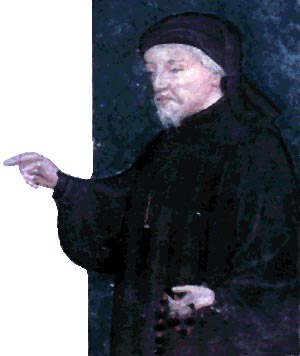Geoffrey Chaucer was a poet and court official of the Middle Ages and is most famous for writing The Canterbury Tales. He was born in London in about 1343 into a middle-class family. He went in to the service of the Countess of Ulster and in 1359 served in the army with Edward III in France. By 1366, he married Phillippa Pan and was appointed a court official. He held various court posts throughout his life, most particularly with the Earl of Derby, later Henry IV. He travelled to France and Italy on diplomatic missions but mainly lived in Kent, England. He died in 1400 and was buried in Westminster Abbey.
His travels overseas influenced his writing most particularly The Book of the Duchess (c.1370), The House of Fame (1370s) and Troilus and Criseyde (c.1385). However, Chaucer is best known for his unfinished collection of stories in poetry and prose called The Canterbury Tales, which he began in 1386. This concerns the tale of 30 pilgrims (including the poet) on a pilgrimage from the Tabard Inn in Southwark (then a suburb of London) to the shrine of Thomas à Becket in Canterbury Cathedral, Kent. Each pilgrim must tell two tales going and two returning. Chaucer gives a brief description of the travellers, which include a knight, a squire, a prioress, a physician, a miller, a wife of the town of Bath, a merchant, a clerk, a lawyer, a cook, a nun, a parson, a friar and a monk. They are standard types in medieval literature, satirical portraits abounding with social observation and commentary.
The diversity of the pilgrims’ classes and positions enables Chaucer to tell the tales in a variety of narrative styles such as courtly romance, allegory, bawdy yarn, sermon, alchemical report, saint's biography and occasionally a combination of several. The Canterbury Tales paints a rich and sophisticated image of medieval life filled with wit, tragedy and keen observation.  Whilst the framing device of a series of tales told on a pilgrimage was popular in narratives of the time, Chaucer’s literary style was quite apart from the mainstream of medieval English literature. His work is not conventionally moralistic but rather detached and sympathetic towards human weakness. The tales are often re-workings of older French and Italian fables but are coloured by the narrators. The response of the pilgrims to each other’s tales builds animosities and they tell further tales in retaliation. The sketches, connections, and tales combine to give sophisticated studies of the pilgrims themselves. With its focus on the human and the humorous, The Canterbury Tales became and remains a popular piece of English fiction.
Whilst the framing device of a series of tales told on a pilgrimage was popular in narratives of the time, Chaucer’s literary style was quite apart from the mainstream of medieval English literature. His work is not conventionally moralistic but rather detached and sympathetic towards human weakness. The tales are often re-workings of older French and Italian fables but are coloured by the narrators. The response of the pilgrims to each other’s tales builds animosities and they tell further tales in retaliation. The sketches, connections, and tales combine to give sophisticated studies of the pilgrims themselves. With its focus on the human and the humorous, The Canterbury Tales became and remains a popular piece of English fiction.
Q